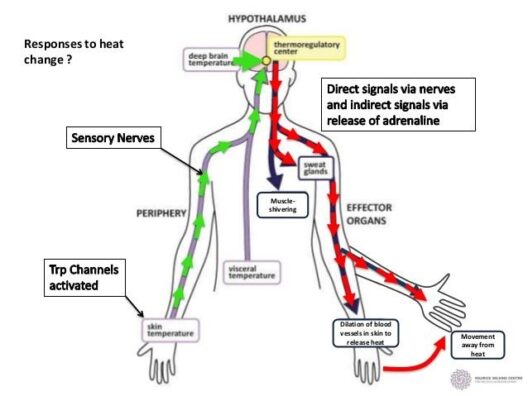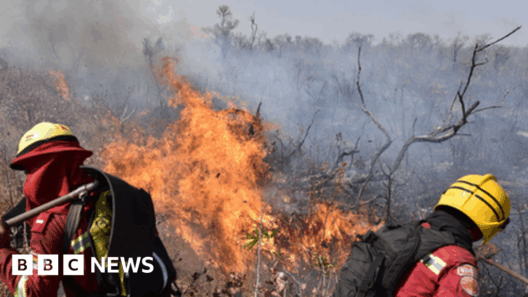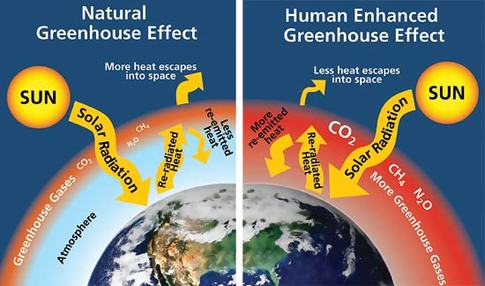In contemplating the ominous specter of global warming, one is inexorably drawn to the metaphor of “melting futures.” This phrase encapsulates not only the physical melting of ice caps but also the gradual erosion of promises and prospects for future generations. As planetary temperatures ascend to unprecedented heights, a chilling transformation beckons—a shift from stability to uncertainty and a cautionary tale about human choices.
The Earth’s climate is an intricate tapestry, woven from myriad threads that interact in complex and often unpredictable ways. Each strand is vital; the polar ice caps, for instance, play a pivotal role in regulating the planet’s temperature. As these vast sheets of ice succumb to rising temperatures, one cannot help but envision the haunting implications of their disappearance. These icy remnants are not merely frozen landscapes but serve as vital indicators of our planet’s health.
Imagine standing on the precipice of a great glacier, a majestic fortress of ice. It stands resilient against the ravages of time, a manifestation of natural history. Yet, each year, with the gradual yet unrelenting rise in temperatures, we witness these behemoths recede, an undeniable testament to our collective apathy towards climate change. The imagery of melting ice embodies the cascading repercussions of our actions—oceans rise, ecosystems fail, and countless species teeter on the brink of extinction.
As the ice melts, a paradox emerges. While some may romanticize the idea of accessing new trade routes or untapped resources in the Arctic, the underlying reality is far more sinister. Melting ice is akin to peeling back the layers of our own existence, exposing not only the frozen past but also the unsettling truths of our current trajectory. As glacial bodies shrink, they unveil a future fraught with peril—a Pandora’s box of consequences waiting to be unleashed.
Melting futures manifest in various alarming ways, one of which is the increasing frequency and intensity of extreme weather events. As the planet warms, the dynamics of atmospheric patterns shift, leading to catastrophic hurricanes, severe droughts, and unprecedented floods. These events become harbingers of forthcoming disasters, inflicting damage that reverberates across communities, economies, and even national borders. Thus, in this melting symphony, the melodies are often discordant, displacing millions and reshaping lives irrevocably.
Furthermore, the repercussions extend beyond human realms. The biodiversity within our oceans and on land is inexorably linked to climatic conditions. Coral reefs, those vibrant underwater landscapes, are particularly susceptible to temperature fluctuations. A mere 1-2 degrees Celsius increase can spell disaster for these ecosystems, leading to bleaching and irreversible damage. Consequently, as these vital habitats falter, entire marine species face extinction, and the intricate balance of oceanic life is thrown into disarray.
On the flip side of this somber narrative lies a glimmer of hope—a burgeoning movement of global consciousness rising against the tide of ignorance and complacency. Communities across the world are uniting under the banner of carbon neutrality, sustainable practices, and environmental justice. Individuals are harnessing their voices to urge policymakers to act against the inertia of bureaucracy. The metaphor of a melting future could, in time, shift narratives toward a sustainable renaissance—a forged resilience in the face of adversity.
Yet, this idealistic vision requires collective will. It necessitates embracing a paradigm where the economic system harmonizes with ecological imperatives rather than exploits them. Transitioning towards renewable energy sources, fostering sustainable agriculture, and engaging in reforestation are essential steps. The transformation from a fossil-fuel-dependent economy into one rooted in sustainability is no longer the distant dream of environmentalists; it is a pressing necessity.
The challenge, however, lies in addressing the deep-seated inertia embedded in societal norms and institutional frameworks. Business-as-usual has desensitized many to the urgency of climate action. Yet, just as glaciers morph and reshape the land over millennia, sometimes imperceptibly, a cultural shift toward sustainability can catalyze profound change. The endurance of effort, however tempestuous, can lead to a renaissance, reviving the hope for a habitable planet.
As one contemplates the future, it is prudent to consider the legacy we wish to leave behind. A future marked by clarity and promise, rather than haze and destruction, hinges on our choices today. While the metaphor of melting futures may initially evoke despair, within it lies the potential for awakening—a recognition that the ice, although melting, can also symbolize resilience. It is imperative to take action to secure a sanctuary where future generations can thrive. Failure to heed the warnings of a warming climate may ultimately render the phrase “melting futures” a stark reality, an epitaph for civilizations, rather than a mere cautionary metaphor.
Thus, as we confront the tangible implications of global warming, we must galvanize our resolve. Embracing knowledge, fostering empathy, and instilling a sense of stewardship towards our planet are paramount. The melting of ice signifies more than rising seas; it heralds a call to arms—an invitation to rebuild our futures on the foundations of sustainability and cooperation. Our narrative will depend on whether we can transform this cautionary tale into a story of redemption. The time to act is now, before the last piece of ice crumbles, taking with it our dreams for a brighter morrow.








